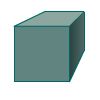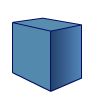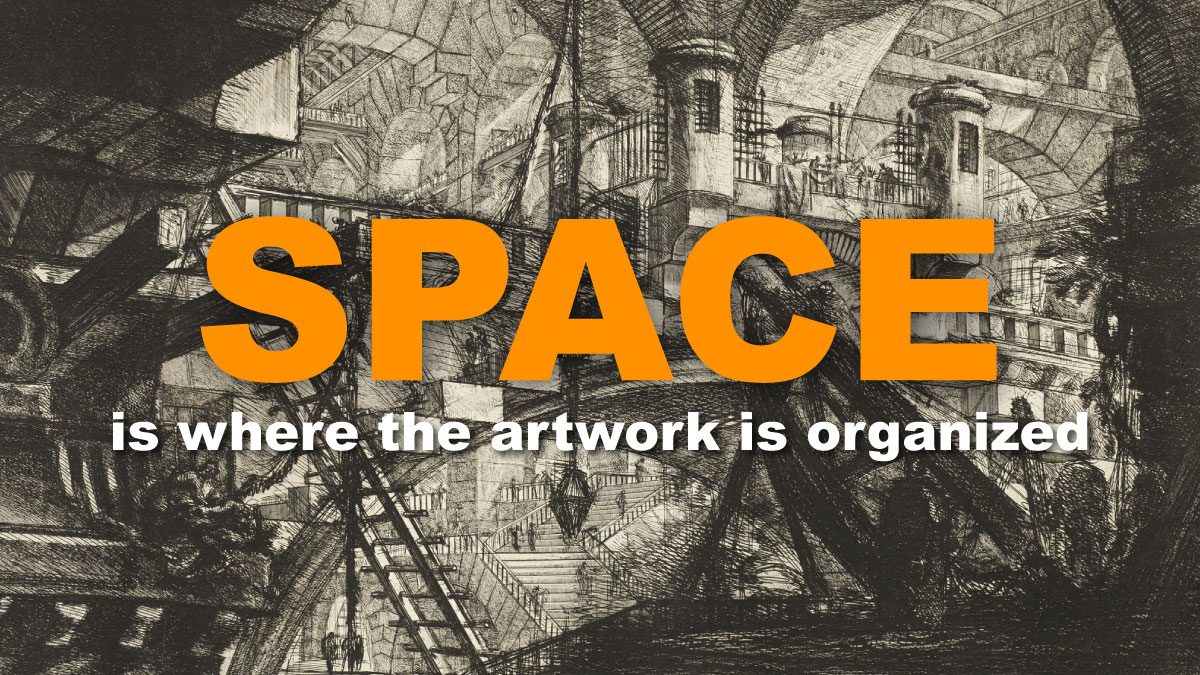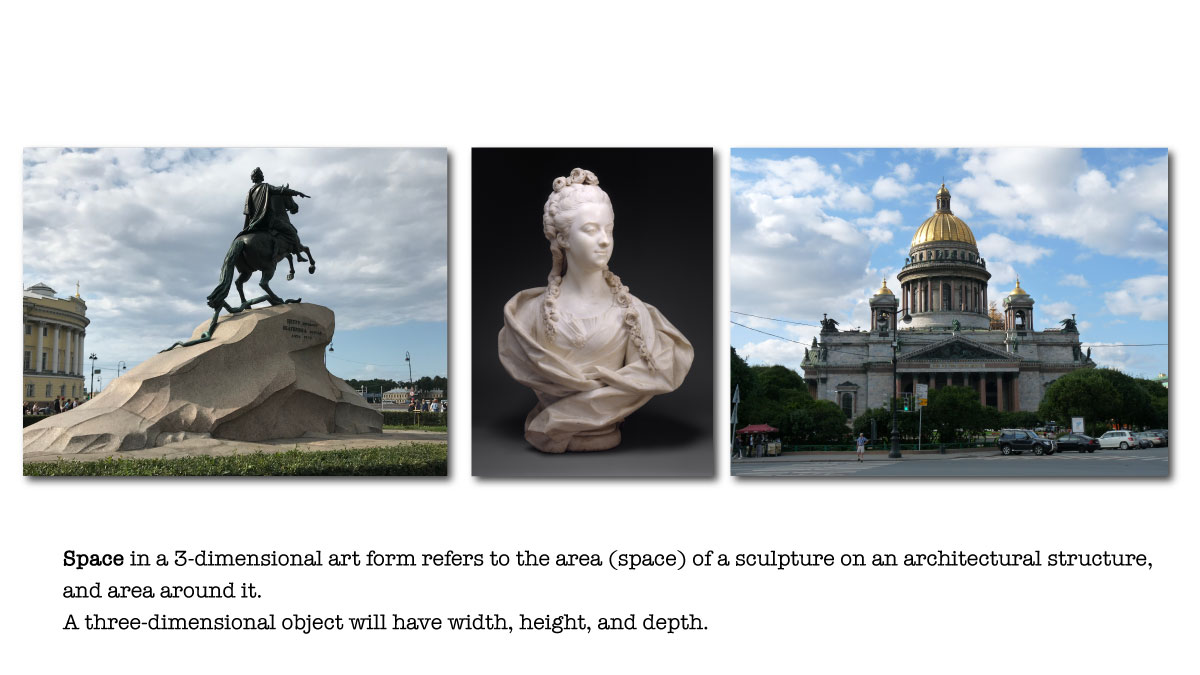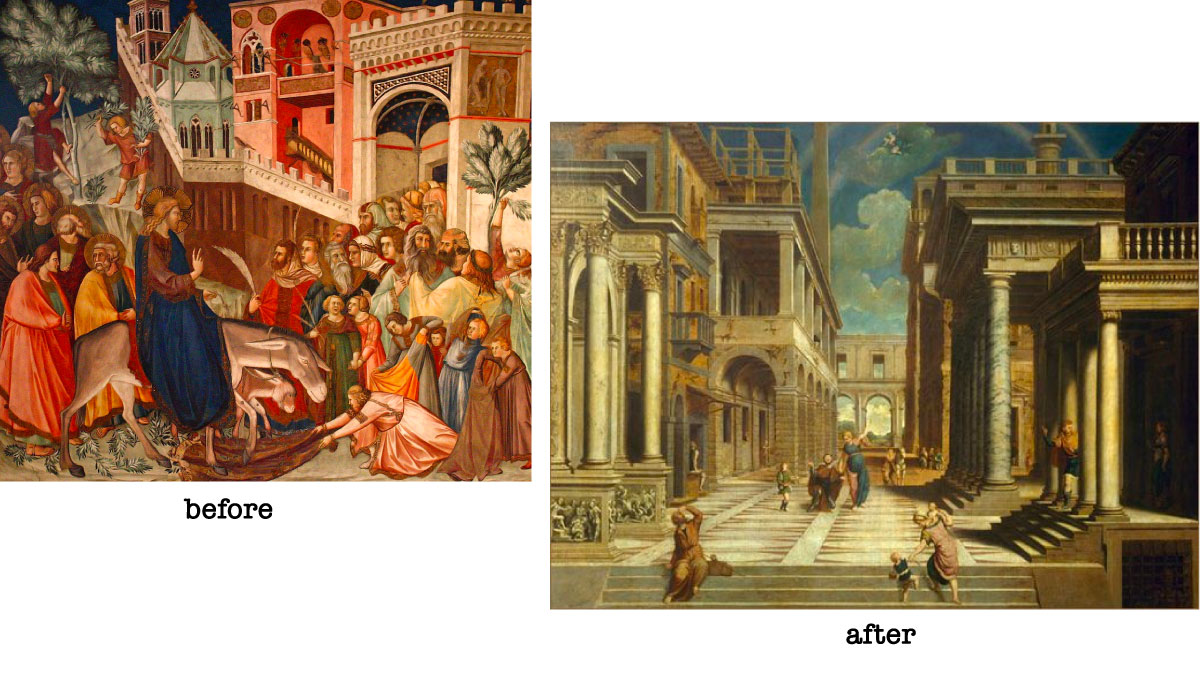by JuliannaKunstler.com
notes
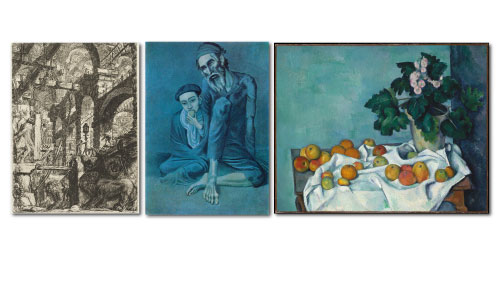
Space in a 2-dimentional drawing or painting refers to the arrangement of objects on the picture plane.
Picture plane is the surface of your drawing paper or canvas.

Space in a 3-dimensional art form refers to the area (space) of a sculpture on an architectural structure, and area around it. A
three-dimensional object will have width, height, and depth.
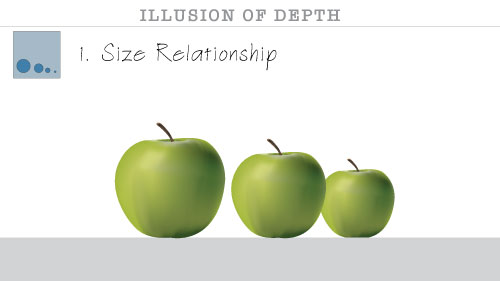
Objects that are smaller than others in the drawing, appear to be further back.
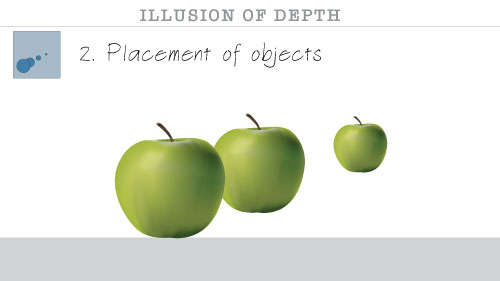
Objects, placed higher than others in the drawing appear to be further back.

Overlapping objects is the basic technique for suggesting space. This means placing one object in front of another, partially hiding the object behind.
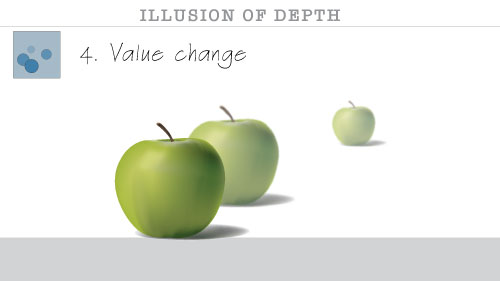
Value change is a form of aerial perspective.
Artists gradually lessen value and value contrasts for objects that appear further back in a composition. I
n linear drawing you can change the thickness of your line.

Details of objects in the distance are less clear than those in the foreground.
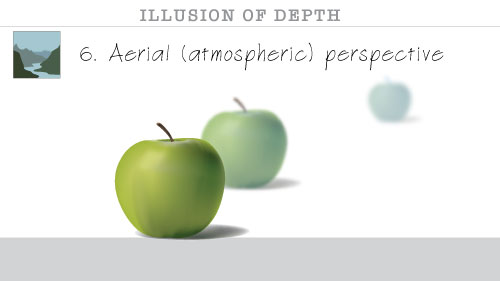
Objects in the distance appear to be “bluer” and less intense or bright.
When their values and contrasts change too - this technique creates an illusion of layers of atmosphere between the viewer and the distant object.

Linear perspective, a system of creating an illusion of depth on a flat surface.
This system involves: horizon line(s), vanishing point(s), and receding lines.
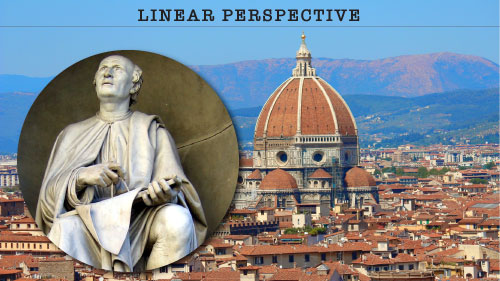
In 15th Century Italian architect and engineer Filippo Brunelleschi rediscovered the theory of linear perspective.
He demonstrated a mathematical approach that proved how forms and space shrink in size according to their location and distance from the eye.

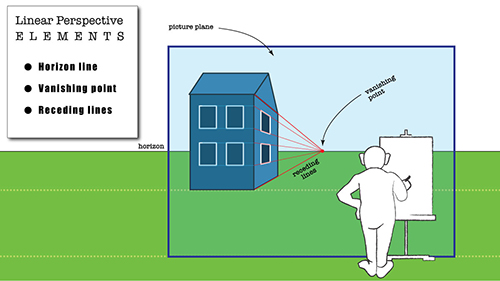
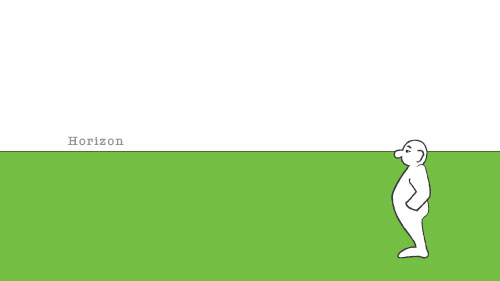
The horizon line is a line drawn across a picture. It is essential for a picture to have a horizon line if a person wishes to communicate from what perspective a person is observing the picture (from above an object, below an object…etc).
The horizon line is always artist’s eye level.
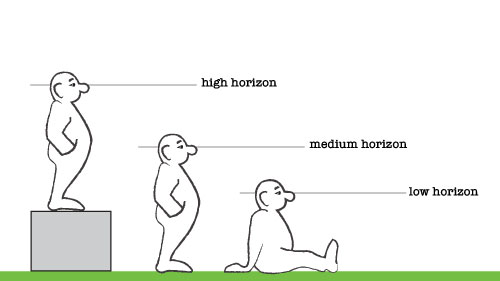
Depending on the artist’s eye level - horizons can be:
- high
- medium
- low
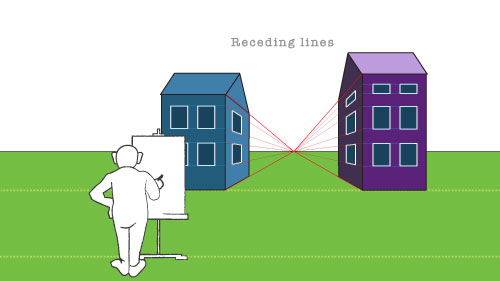
Receding lines are lines parallel to each other that gradually move away from the viewer.
All lines in nature that are parallel to each other appear to converge at the same point as they recede from the viewer.
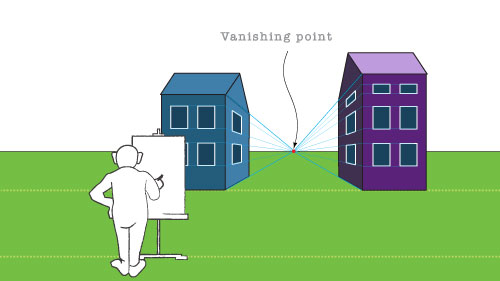
Vanishing point is an imaginary point that receding parallel lines appear to converge to.
Most of the time vanishing points are positioned on the horizon line.
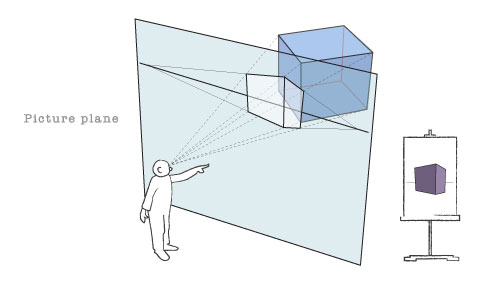
A picture plane is the two-dimensional surface upon which a painting/drawing is created.
A window can be understood as a picture plane as one looks out to the scene beyond it.
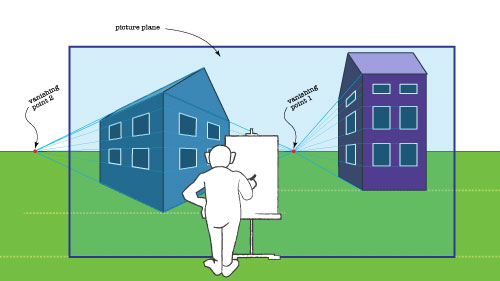
Based on the position of the object to the picture plane - we determine the number of vanishing points necessary to interpret this object on a flat surface.
We use a 1pt. perspective when the object is parallel to our picture plane.
We use a 2pt. perspective when the object is at an angle to our picture plane.
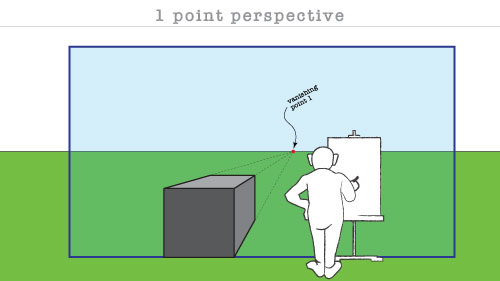
We use 1pt. perspective when the object is parallel to our picture plane.
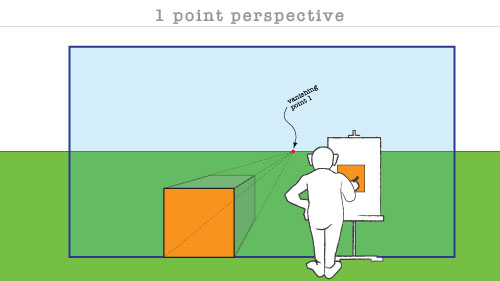
You always start drawing your object with the closest part.
The closest part of a box in 1-pt. perspective is the front side.
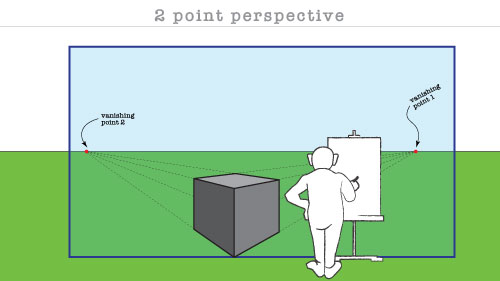
We use 2 pt. perspective when the object is at an angle to the picture plane.
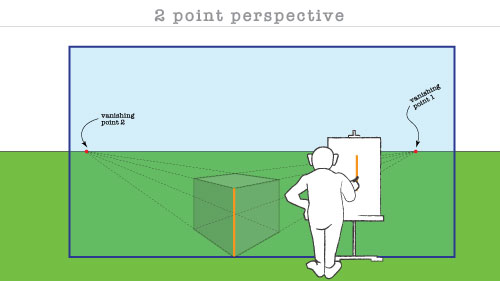
You always start drawing your object with the closest part.
The closest part of a box in 2-pt. perspective is the front corner.
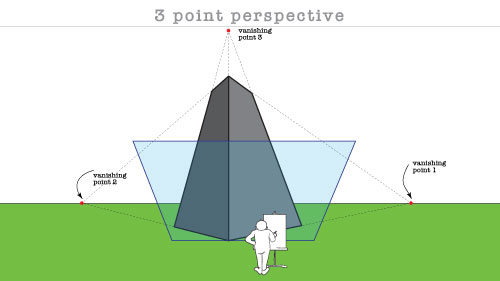
We use a 3pt. perspective for tall or deep objects.
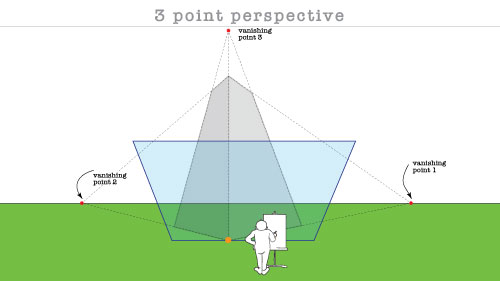
You always start drawing your object with the closest part.
The closest part is the front corner.

